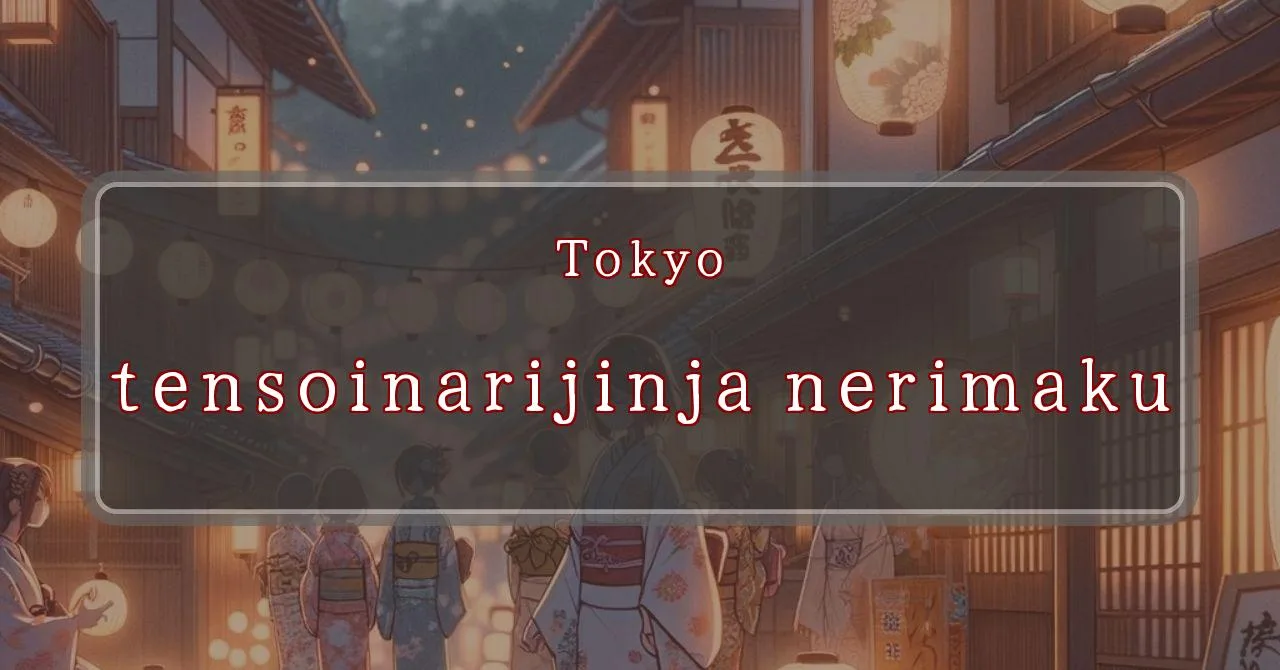Gleaming lights and divine spirits: A sacred spectacle at Tenso Inari Shrine
Basic Information
Tenso Inari Shrine is a Shinto shrine located in Nerima Ward, Tokyo, Japan. It is dedicated to the deity Inari, the god of rice and sake.
- Address: 5-14 Minami-Tanaka, Nerima-ku, Tokyo 178-0063
- Phone Number: Unavailable
- Access: 10-minute walk from Oizumi Gakuen Station on the Seibu Ikebukuro Line
- Festival Days: September 14th and 15th, 2024
Main Events and Attractions of the Festival
The Tenso Inari Shrine Festival is a lively and colorful event that attracts many visitors each year. The main events and attractions of the festival include:
Mikoshi Procession
A highlight of the festival is the mikoshi procession, where a portable shrine is carried through the streets of Nerima Ward. The mikoshi is decorated with colorful tapestries and streamers, and it is carried by a team of people. The procession is accompanied by music and dancing, and it creates a festive atmosphere.
Kagura Performance
Kagura is a traditional Japanese dance that is often performed at Shinto shrines. During the Tenso Inari Shrine Festival, kagura performances are held several times a day. The dances are performed by trained dancers, and they tell stories from Japanese mythology.
Food Stalls
No Japanese festival is complete without food stalls! At the Tenso Inari Shrine Festival, there are many food stalls selling a variety of delicious treats. You can find everything from traditional Japanese dishes like yakitori and takoyaki to more modern fare like hamburgers and hot dogs.
Games and Activities
There are also a number of games and activities for children at the festival. These include things like goldfish scooping, ring toss, and face painting. There is also a petting zoo where children can interact with animals.
Fireworks Display
The festival concludes with a spectacular fireworks display. The fireworks are launched from a nearby park, and they light up the night sky with their brilliant colors.
Blessings and Deities
Tenso Inari Shrine is dedicated to the deity Inari, the god of rice and sake. Inari is one of the most popular deities in Japan, and he is often depicted as an old man with a long white beard and a red cap. Inari is said to bring good fortune and prosperity to those who worship him, and he is also associated with fertility and agriculture.
- Deity: Inari
- Benefits: Good fortune, prosperity, fertility, agriculture
Origin and History
The origins of Tenso Inari Shrine are unknown, but it is believed to have been founded in the early 17th century. The shrine was originally located in a different part of Nerima Ward, but it was moved to its current location in 1880. The shrine has been rebuilt several times over the years, most recently in 1960.
- Founded: Early 17th century
- Original location: Different part of Nerima Ward
- Moved to current location: 1880
- Rebuilt: Several times, most recently in 1960
Tips and Notes for Visitors
If you are planning to visit Tenso Inari Shrine during the festival, here are a few tips and notes to keep in mind:
- The festival is very popular, so it is best to arrive early to avoid crowds.
- Wear comfortable shoes, as you will be doing a lot of walking.
- Bring cash, as many of the food and game stalls do not accept credit cards.
- Be respectful of the shrine and its surroundings.
- Enjoy the festival and all that it has to offer!
Parking Information
There is no parking lot at Tenso Inari Shrine. However, there are several public parking lots nearby. The closest parking lot is located about a 5-minute walk from the shrine.
- Parking lot: None at the shrine
- Nearby public parking lots: Yes
- Closest parking lot: 5-minute walk from the shrine
Popular Stalls and Food Carts in Recent Years
| Type of Stall | Description |
|---|---|
| Takoyaki | A staple at Japanese festivals. Characterized by a crispy outside and a creamy inside. |
| Jaga Butter | A simple yet popular snack of hot potatoes lavishly topped with melted butter. |
| Baby Castella | Small castella cakes, sweet and fluffy treats enjoyed by children and adults alike. |
| Grilled Ayu with Salt | Fresh ayu fish grilled whole with salt, a savory taste of Japanese summer. |
| Shaapin | A unique gourmet item influenced by foreign cuisine, with a chewy skin wrapping the filling. |
| Okonomiyaki | A Japanese grilled dish where you often choose your own ingredients for a personalized flavor. |
| Cotton Candy | A fluffy, sweet snack that’s extremely popular with children. |
| Chocolate Banana | A banana coated in chocolate, a fun and visually appealing dessert. |
| Kushiyaki | Various types of ingredients skewered and grilled, an easy-to-enjoy snack. |
| Yakisoba | Fried noodles mixed with a special sauce, a fast food favorite in Japan. |



